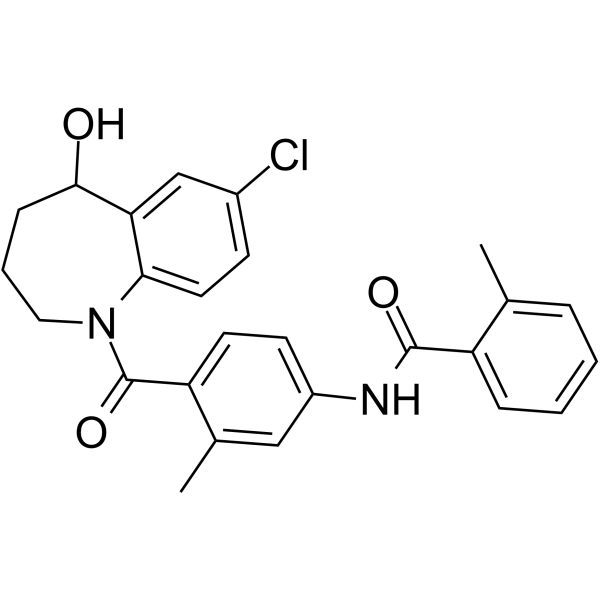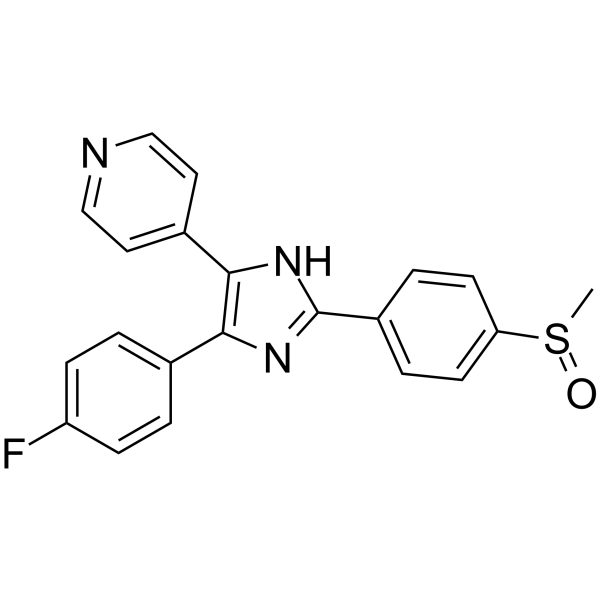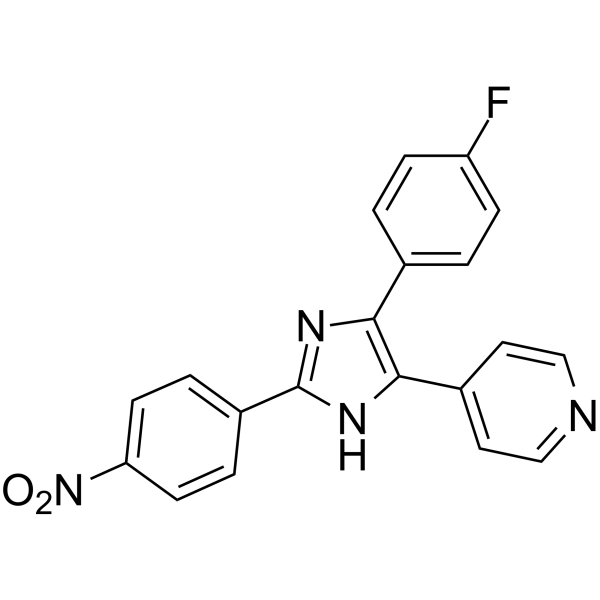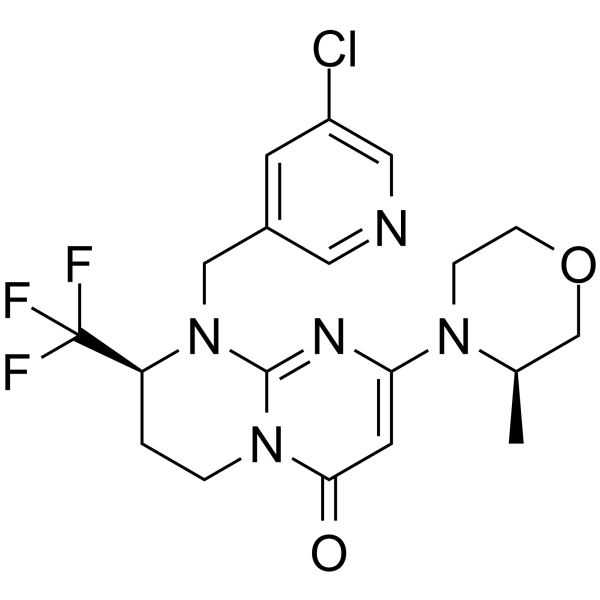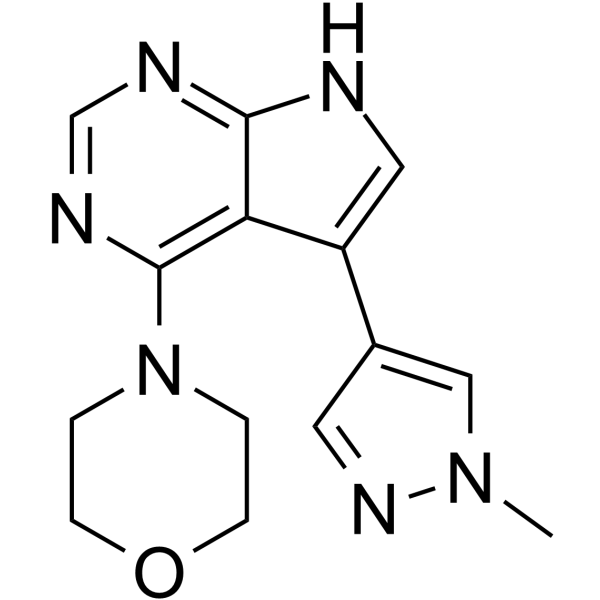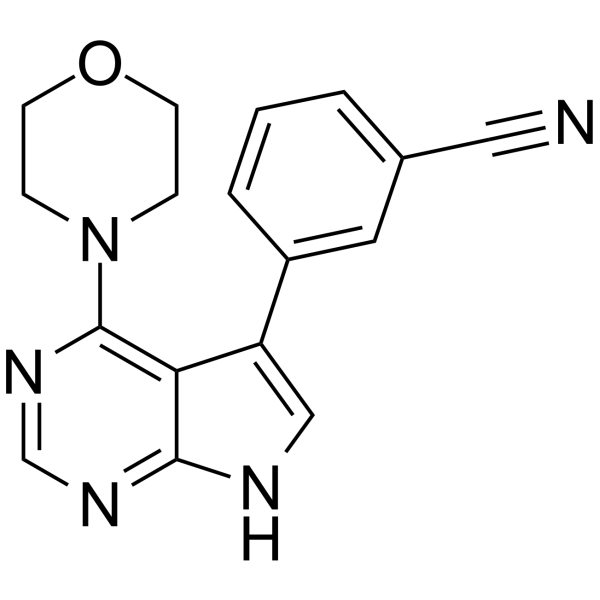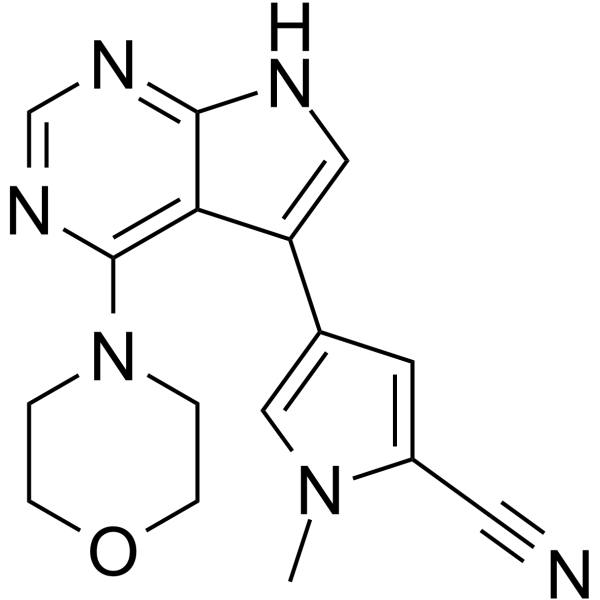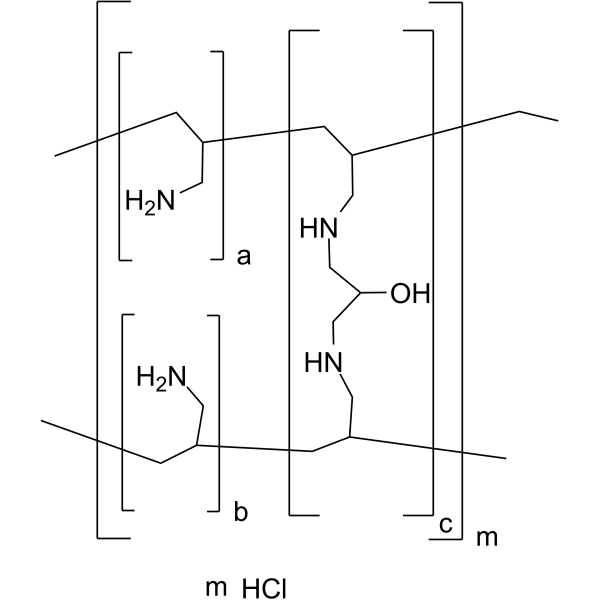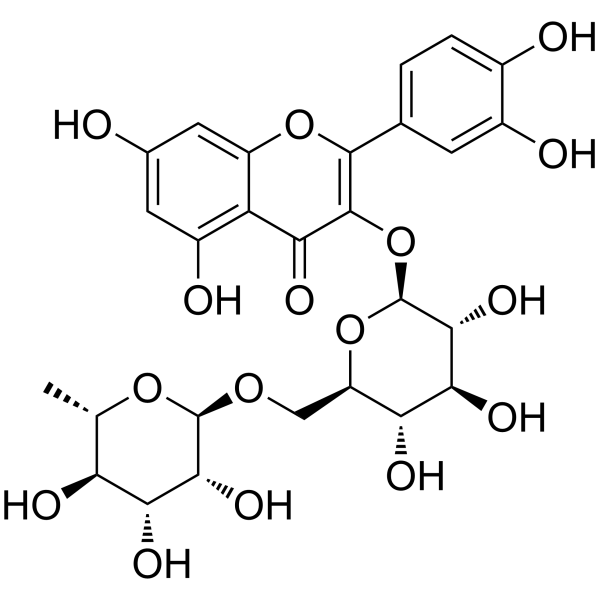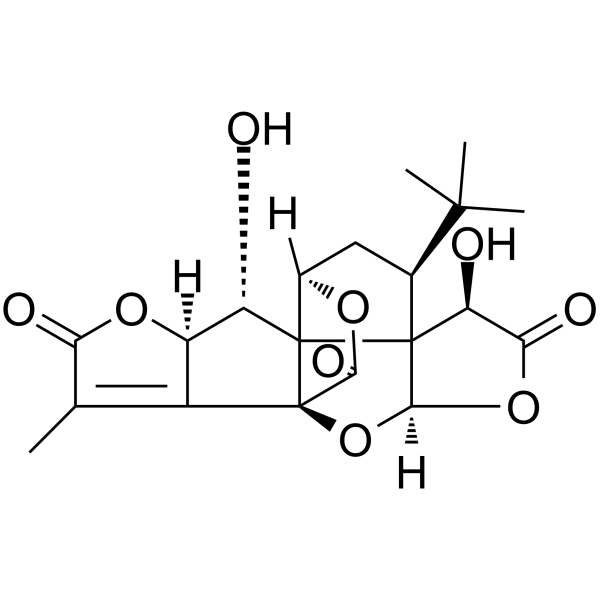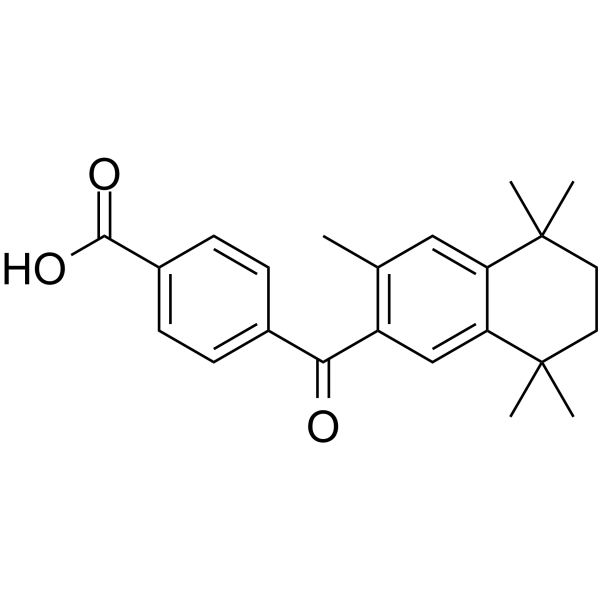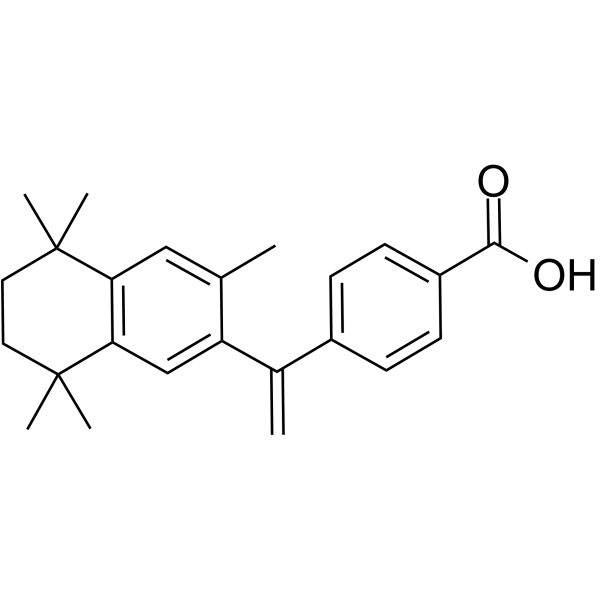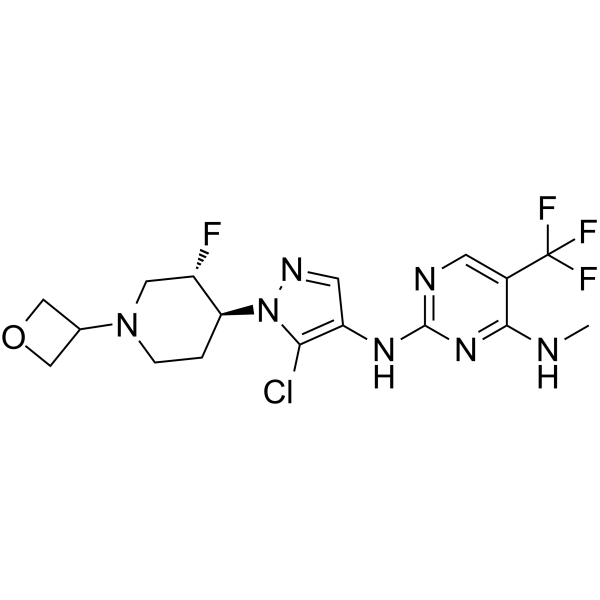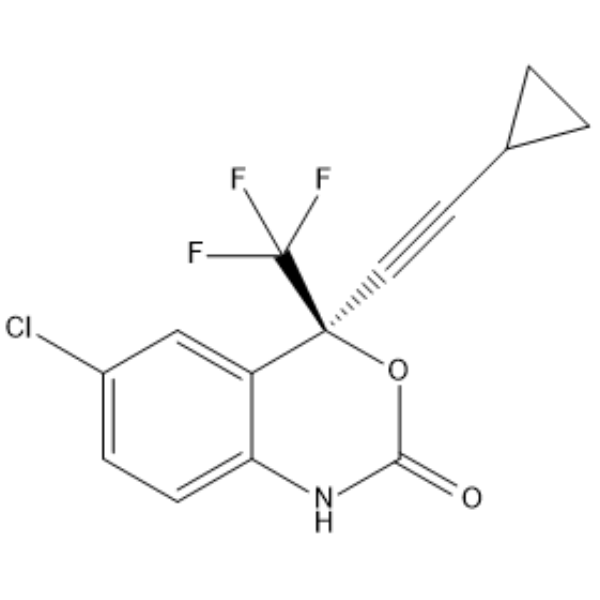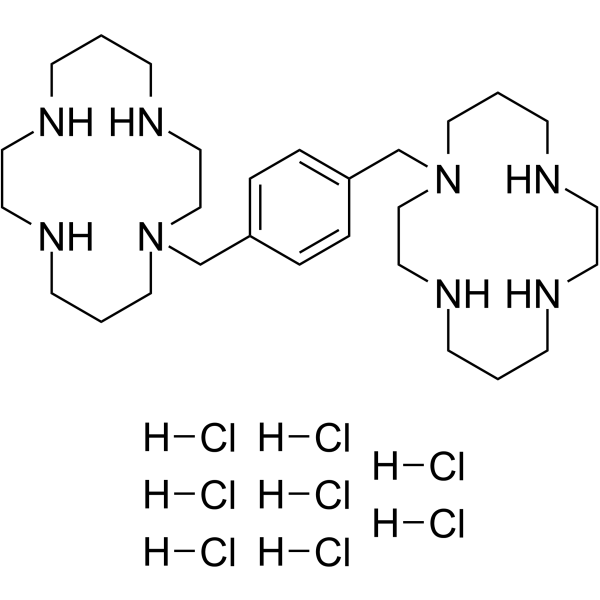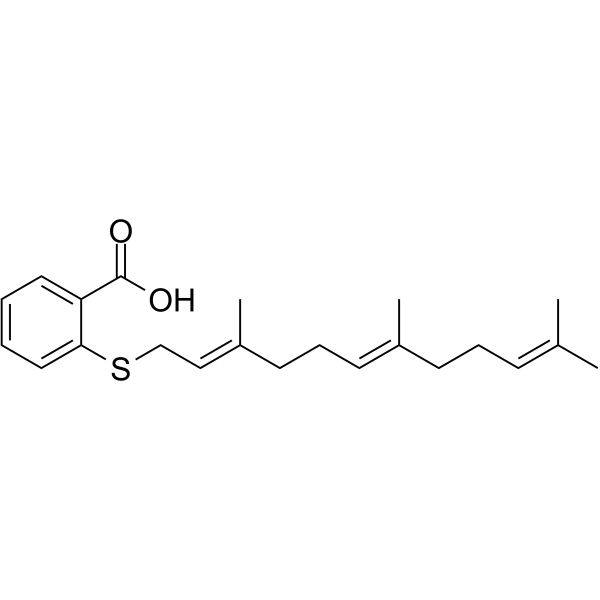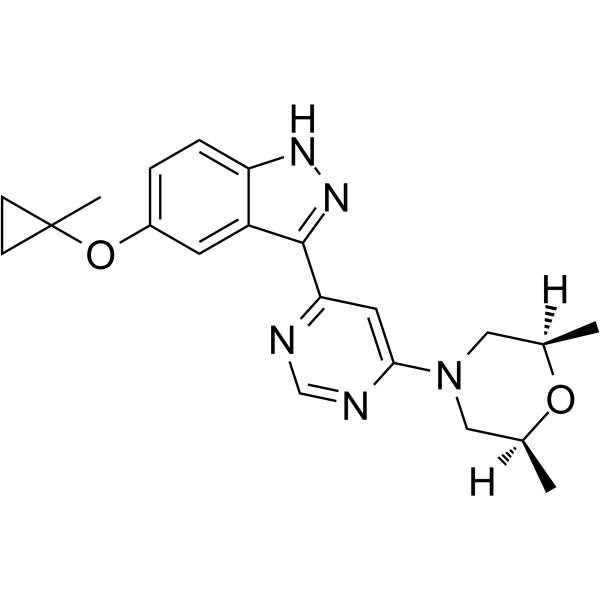|
BP12478
|
Tolvaptan
|
|
|
|
|
Tolvaptan is an orally bioavailable, selective, arginine vasopressin receptor 2 (V2, AVPR2) antagonist that can be used to treat hyponatremia.
|
|
BP12479
|
Adezmapimod
|
|
|
|
|
SB 203580 is a p38 MAPK inhibitor (IC50: 0.3-0.5 μM). It shows more than 100-fold selectivity over PKB, LCK, and GSK-3β.
|
|
BP12480
|
PD 169316
|
|
|
|
|
PD 169316 is a potent, cell-permeable and selective p38 MAP kinase inhibitor.
|
|
BP12481
|
SAR405
|
|
|
|
|
SAR-405 is a potent and selective PIK3C3/Vps34 inhibitor (IC50:1.2 nM; Kd:1.5 nM) that prevents autophagy and synergizes with MTOR inhibition in tumor cells. SAR405 treatment also inhibits autophagy induced either by starvation or by MTOR (mechanistic target of rapamycin) inhibition. Combining SAR405 with everolimus results in a significant synergy on the reduction of cell proliferation using renal tumor cells.
|
|
BP12482
|
Sulfalene
|
|
|
|
|
Sulfalene, a long-acting sulfonamide antibiotic, is used for the therapy of chronic bronchitis, urinary tract infections, and malaria.
|
|
BP12483
|
PF-06454589
|
|
|
|
|
PF-06454589 is a potent inhibitor of LRRK2.
|
|
BP12484
|
PF-06447475
|
|
|
|
|
PF-06447475 is a highly effective, specific, brain penetrant LRRK2 inhibitor with IC0 of 3/11 nM for wild type LRRK2 and G2019S LRRK2 respectively.
|
|
BP12485
|
PFE-360
|
|
|
|
|
PFE-360 is a potent and selective inhibitor of LRRK2 kinase (IC50: 2.3 nM in vivo).
|
|
BP12486
|
Sevelamer hydrochloride
|
|
|
|
|
Sevelamer HCl is a phosphate binding drug used to treat hyperphosphatemia via binding to dietary phosphate and prevents its absorption.
|
|
BP12487
|
Rutin
|
|
|
|
|
Rutin, a flavonoid, has a variety of biological activities including antiallergic, anti-inflammatory, antiproliferative, and anticarcinogenic properties.
|
|
BP12488
|
Ginkgolide K
|
|
|
|
|
Ginkgolide K induces protective autophagy through the AMPK/mTOR/ULK1 signalling pathway. It possesses neuroprotective activity.
|
|
BP12489
|
LG-100064
|
|
|
|
|
LG-100064 is an agonist of retinoid-X-receptor (RXR)(EC50s of 330 nM, 200 nM, and 260 nM for RXRα, RXRβ and RXRγ)
|
|
BP12490
|
Bexarotene
|
|
|
|
|
Bexarotene is a retinoid analogue that is used to treat the skin manifestations of cutaneous T cell lymphoma (CTCL).
|
|
BP12491
|
GNE-9605
|
|
|
|
|
GNE-9605 is a highly effective, specifical, and brain-penetrant LRRK2 inhibitor (IC50: 19 nM).
|
|
BP12492
|
Efavirenz
|
|
|
|
|
Efavirenz is a Human Immunodeficiency Virus 1 Non-Nucleoside Analog Reverse Transcriptase Inhibitor. The mechanism of action of efavirenz is as a Non-Nucleoside Reverse Transcriptase Inhibitor, and Cytochrome P450 3A Inducer, and Cytochrome P450 2B6 Inducer, and Cytochrome P450 2C9 Inhibitor, and Cytochrome P450 2C19 Inhibitor, and Cytochrome P450 3A4 Inhibitor. The chemical classification of efavirenz is Non-Nucleoside Analog.
|
|
BP12493
|
Plerixafor octahydrochloride
|
|
|
|
|
AMD 3100 octahydrochloride blocks the binding of stromal cell-derived factor (SDF-1alpha) to the cellular receptor CXCR4, resulting in hematopoietic stem cell (HSC) release from bone marrow and HSC movement into the peripheral circulation. Plerixafor is a bicyclam with hematopoietic stem cell-mobilizing activity.
|
|
BP12494
|
Isosorbide Mononitrate
|
|
|
|
|
Isosorbide mononitrate is a Nitrate Vasodilator, dilating the blood vessels so as to reduce the blood pressure.
|
|
BP12495
|
BAR502
|
|
|
|
|
BAR502 is a dual GPBAR1 and FXR agonist (IC50s: 0.4 μM and 2 μM).
|
|
BP12496
|
Salirasib
|
|
|
|
|
Salirasib(Ki=2.6 μM), an effective competitive prenylated protein methyltransferase (PPMTase) inhibitor, inhibits Ras methylation with potential antineoplastic activity.
|
|
BP12497
|
MLi-2
|
|
|
|
|
MLi-2 is a structurally novel, highly potent, and selective LRRK2 kinase inhibitor with central nervous system activity. MLi-2 exhibits exceptional potency in a purified LRRK2 kinase assay in vitro (IC50 = 0.76 nM), a cellular assay monitoring dephosphorylation of LRRK2 pSer935 LRRK2 (IC50 = 1.4 nM), and a radioligand competition binding assay (IC50 = 3.4 nM).
|
